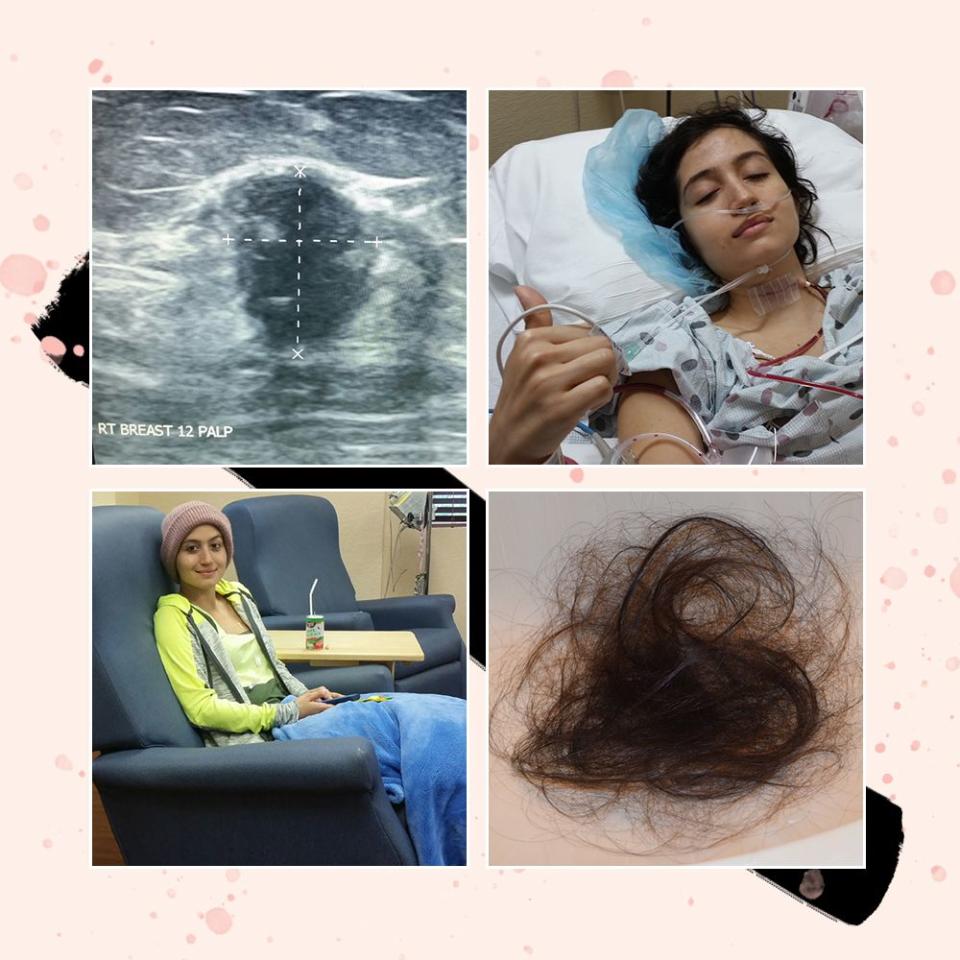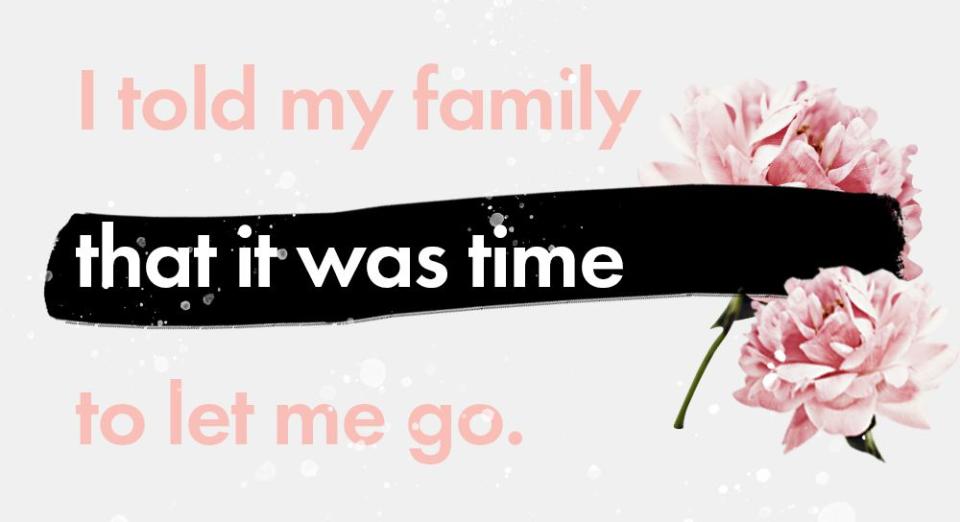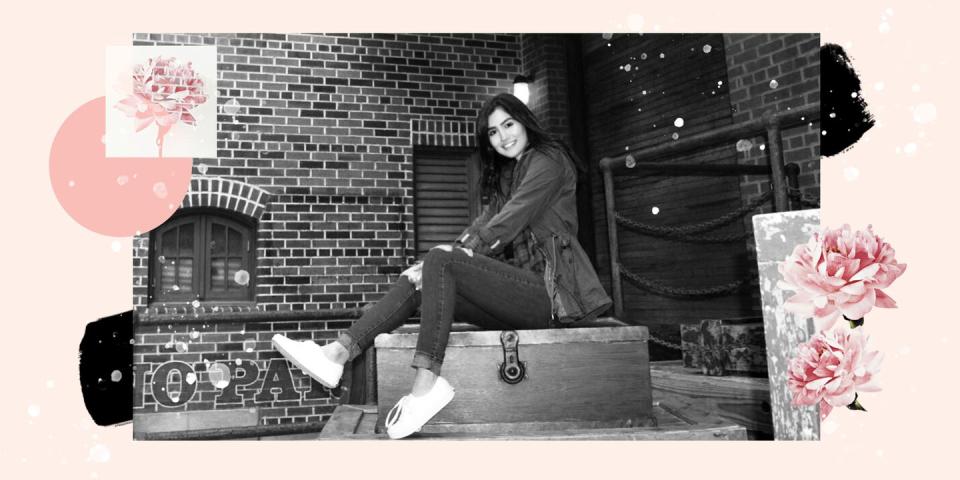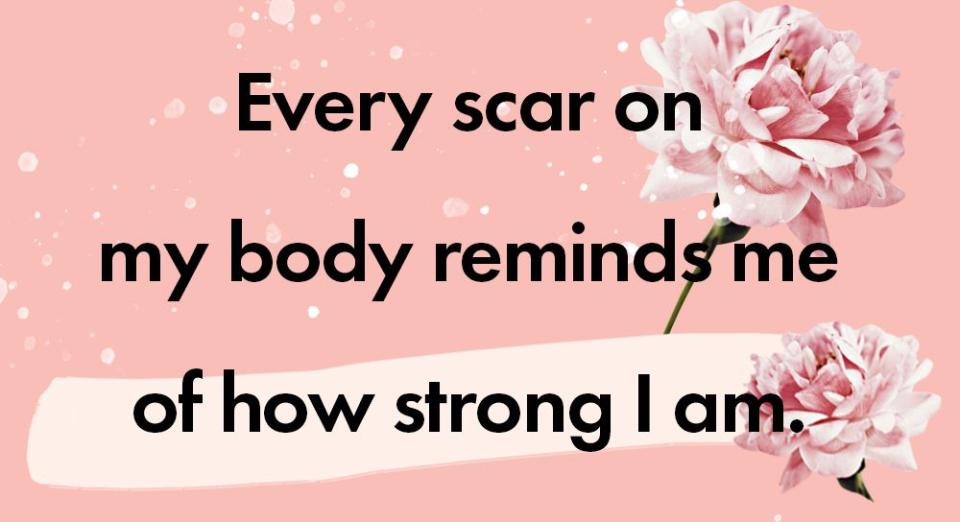I Was Diagnosed With Breast Cancer at Age 22. Then a Mastectomy Infection Almost Killed Me.

You know that lumpiness you sometimes feel in your breasts right before you get your period? That’s what I thought I felt in the shower one day in January 2016.

I was 22 and living at home in West Palm Beach, Florida, between finishing my undergraduate degree and getting my master’s degree in forensic psychology. I brushed off the boob thing. At the time, I was consumed with caring for my grandma, who had just undergone a double mastectomy to treat breast cancer. I’d gained some weight and had been feeling extra tired, but it wasn’t until June, when I noticed the lump again, that I asked my mom to feel it.
By that point, the mass was as large and hard as a golf ball-my mom insisted I see a doctor right away. Days later, my primary-care physician prescribed a same-day ultrasound. When the technician saw my scan, she sent me for an emergency mammogram. My next stop was oncology. I tried not to flinch as a new doctor stuck a needle about as long as the length of my hand into my right breast. I felt pressure until the point pierced the mass, which was so dense it caught the needle. The doctor had to jiggle the shaft to get it out of me.
On August 9, the tests confirmed that I had stage 1 breast cancer, the kind that hasn’t spread yet and is generally treatable. Pfff, I thought. I wasn’t going to let it beat me down.

Still, I was paranoid it would metastasize and I wanted it out of me, like, yesterday. First, however, doctors had to shrink the mass with eight rounds of chemotherapy. Only then could they safely remove both my breasts-the right one to cut out the tumor, and the left so the disease couldn’t spread.
The plan was aggressive, just like my illness. In the two weeks that passed between my diagnosis and the first step-surgery to implant a chemotherapy port into my chest-it progressed to stage 3, meaning it had spread to nearby lymph nodes. This didn’t surprise my doctors, who already knew my hormones were feeding the cancer. While they’d have liked to accelerate my treatment, we had to wait for my port wound to heal.
My first four chemotherapy infusions seriously tested my resolve. On top of acquiring strange cravings (chemo can change your sense of taste) for spicy foods and Chef Boyardee, I constantly felt nauseated and exhausted.

While showering a few days after my first treatment, I noticed a clump of hair cascade toward the drain. Going into chemo, my biggest fear had been losing my nearly waist-length hair. Without it, I’d look sick-and for what? Why should it have to go while the cancer remained? For the first time, I really cried. I was bald by the time my 23rd birthday rolled around that fall.
Because I was also undergoing separate treatments to raise my white blood cell count, pain coursed through my bones. At one point after my third treatment, walking was so unbearable-I had to hunch over like an old lady-that I was ready to give up. I told my family that it was time to let me go.
I left my house infrequently between treatments and doctor visits, but when I did, I stuck out. My skin was pale and hurt to the touch-pain and skin changes are possible side effects of chemotherapy-so I wore baggy clothes for comfort’s sake. And even though we lived in sunny Southern Florida, I shunned wigs-they made me feel weird-in favor of beanies. Once, during a mall trip with my mom, I noticed an older couple in a department store staring at me and mumbling. I lost it.
“What’s the problem? What’s so funny? I have cancer!” I shouted as they quickly disappeared into the racks. I never expected the world to be so cruel-myself included.

My then-boyfriend Louis tried to get me to go out, but it was tough to feel attractive when none of my date clothes fit. The chemo and steroids I’d been prescribed had made me gain 20 pounds.
At restaurants, my eyes would dart among all the women with long flowing hair, and I’d feel insufficient. Although Louis insisted I was beautiful, my tanking self-esteem became a source of conflict. He wanted me to feel more confident; all I wanted was to be understood: I felt ugly.
By the time my eyelashes and eyebrows fell out toward the end of my chemotherapy in December, I was counting Netflix among my best friends.

Goodbye, Breasts
My tumor had shrunk to the size of a quarter when I went in for my double mastectomy in February. Because nipples can carry cancer cells, the plan was to remove mine entirely, scrape out the breast tissue and fat, and replace my A-cups with B-size expanders that would go underneath my chest muscles and gradually stretch the skin until my wounds healed enough to have implants inserted.

Before the surgery, I got a lymph node biopsy, and when I woke up from the eight-hour operation, I felt like someone had stabbed me. Drainage tubes on both sides of my chest made it difficult for me to lift my arms, and for the first two or three weeks, I needed my parents or Louis, who’d just turned 23, to help me go to the bathroom, eat, and shower.
Days after the mastectomy, I got the biopsy results: One contained microscopic cancer cells. After fighting so hard, losing all my hair and both my breasts, the disease had continued to spread. I’d never felt more defeated.

A Dangerous Setback
As February turned into March, my mom noticed the skin over my left expander turning purple like a bruise. The area felt soft and mushy-a sign I mistook for tissue regrowth until I began getting fevers and chills. Over the course of a few days, my fever worsened.
I saw a doctor, who inserted a needle into my left expander and extracted enough dark-green fluid to fill two vials. Somehow, I’d contracted staph-a potentially lethal infection that can stem from contamination that you’re particularly prone to when you have cancer. First cancer, and now staph is trying to kill me?!
The same day, I was rushed into emergency surgery to have my expander replaced. I’d have to wait and see how my body responded to the new implant placeholder. Another infection would render me ineligible for reconstruction, meaning I’d be left with a flat chest forever.
Luckily, the replacement went well with no complications, and I headed home the same day with oral antibiotics. The biggest problem: I needed radiation to zap the last dregs of cancer but couldn’t undergo treatment until my chest healed entirely.

The prospect of waiting even a second longer to fight my illness overwhelmed me. It had already spread-and quickly. Feeling borderline possessed, I wanted it out. I couldn’t stop picturing the the disease metastasizing inside of me.
I got my real implants in June 2017, and then in July, six months after I ended chemotherapy and four months after my bilateral mastectomy, I went in for my first radiation appointment.
Radiation doesn’t hurt, but over time, the skin surrounding the area, which is treated by lasers, can burn. I needed 30 rounds. Every time I went in for treatment, I’d see patients in the waiting room, charred skin peeking out from beneath their clothes.
A month after radiation, I was feeling more like myself. I had hunkered down during recovery to study, receiving my master’s of science in forensic psychology and graduating with honors.

But Then, Groundhog Day
In November, I went in for a PET scan. “Don’t freak out,” my oncologist warned. My thyroid had lit up in the scan. I’d need an ultrasound, then a mammogram, then a biopsy. I felt like I was living my breast cancer all over again.
Days later, I was diagnosed with thyroid cancer. (While it didn’t stem from my breast cancer, the two can be correlated.) I was ready to fight it-nothing could compare to what I’d already been through-but I did wonder what else was in store for me.
In December, I had a full thyroidectomy. For the rest of my life, I’ll take a thyroid medication and, at least for the time being, receive hormone shots every three months, since shutting down my reproductive system can reduce the likelihood that my type of cancer comes back.

Recovering Lost Time
Those three years I spent fighting cancer? Of course they set me back. Career-wise, I’m not where I thought I’d be at 25. I can’t afford to move out of my parents’ house while I’m paying off medical bills. And I want to go back to New York City, where I was born, but I can’t because I have to see my doctors in Florida every six months.

Things aren’t and never will be perfect. I have hot flashes and I get tired. I obsess over new bald spots on my scalp, which still surface as a side effect of my thyroid medication. Eventually, I’ll need a hysterectomy to permanently stop my ovaries from producing hormones that could raise my risk of reoccurrence. And who knows if I’ll ever be able to carry my own child-subjecting myself to pregnancy hormones after being diagnosed with a hormone-driven cancer could put me in danger.
That said, I’m happy. Last spring, Louis proposed at the Wizarding World of Harry Potter in Universal Studios, and we got married in February.

And in December, a routine PET scan confirmed that I was finally cancer-free. After everything I’ve been through, I feel healthy. Every scar on my body reminds me of how strong I am. I showed cancer who’s boss.

('You Might Also Like',)

